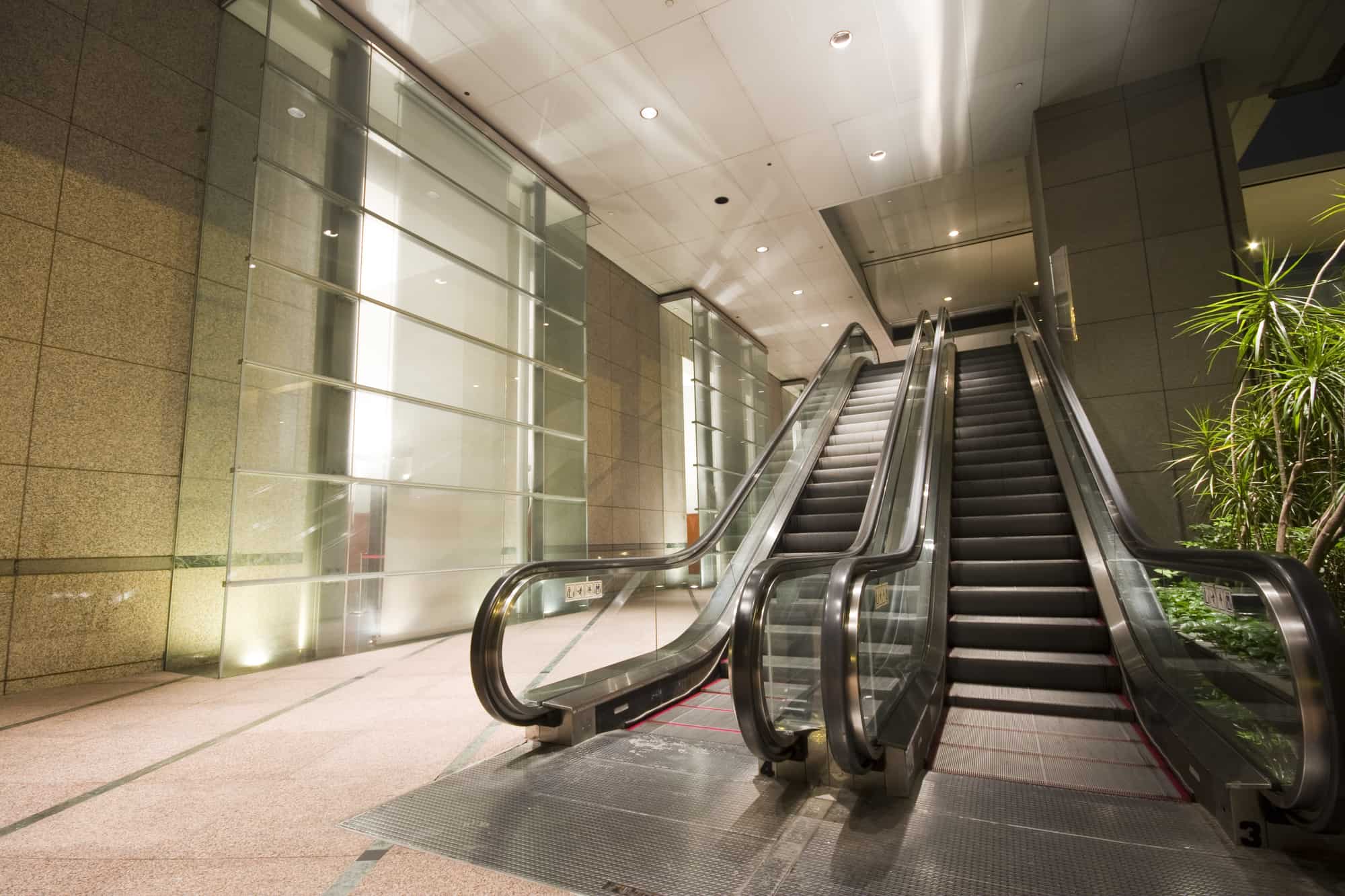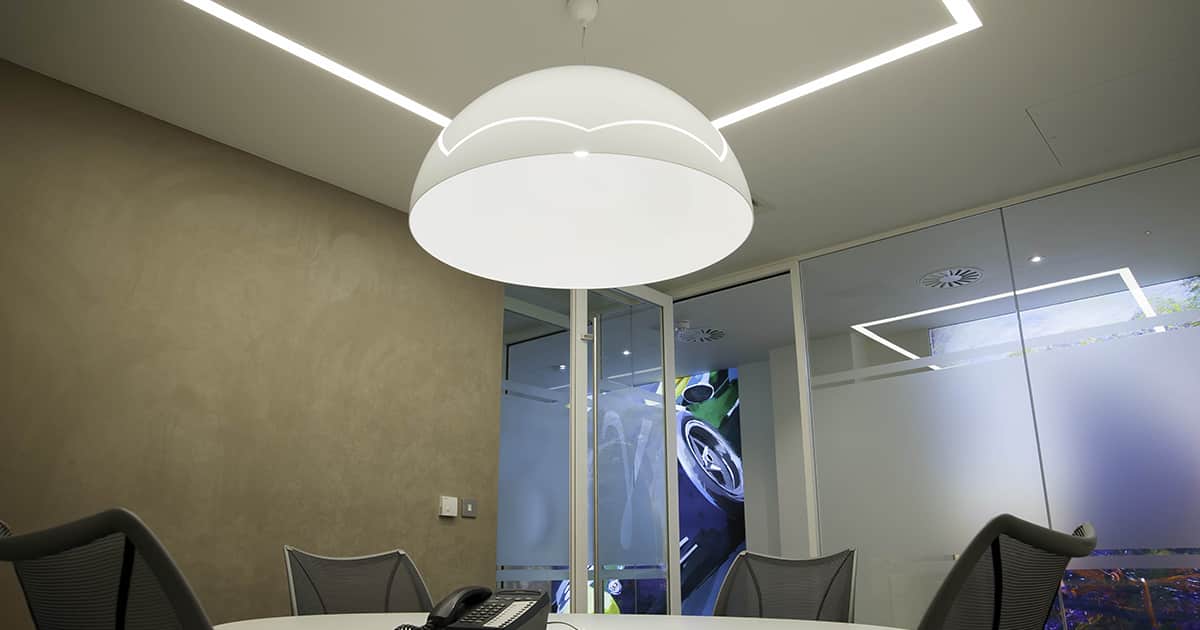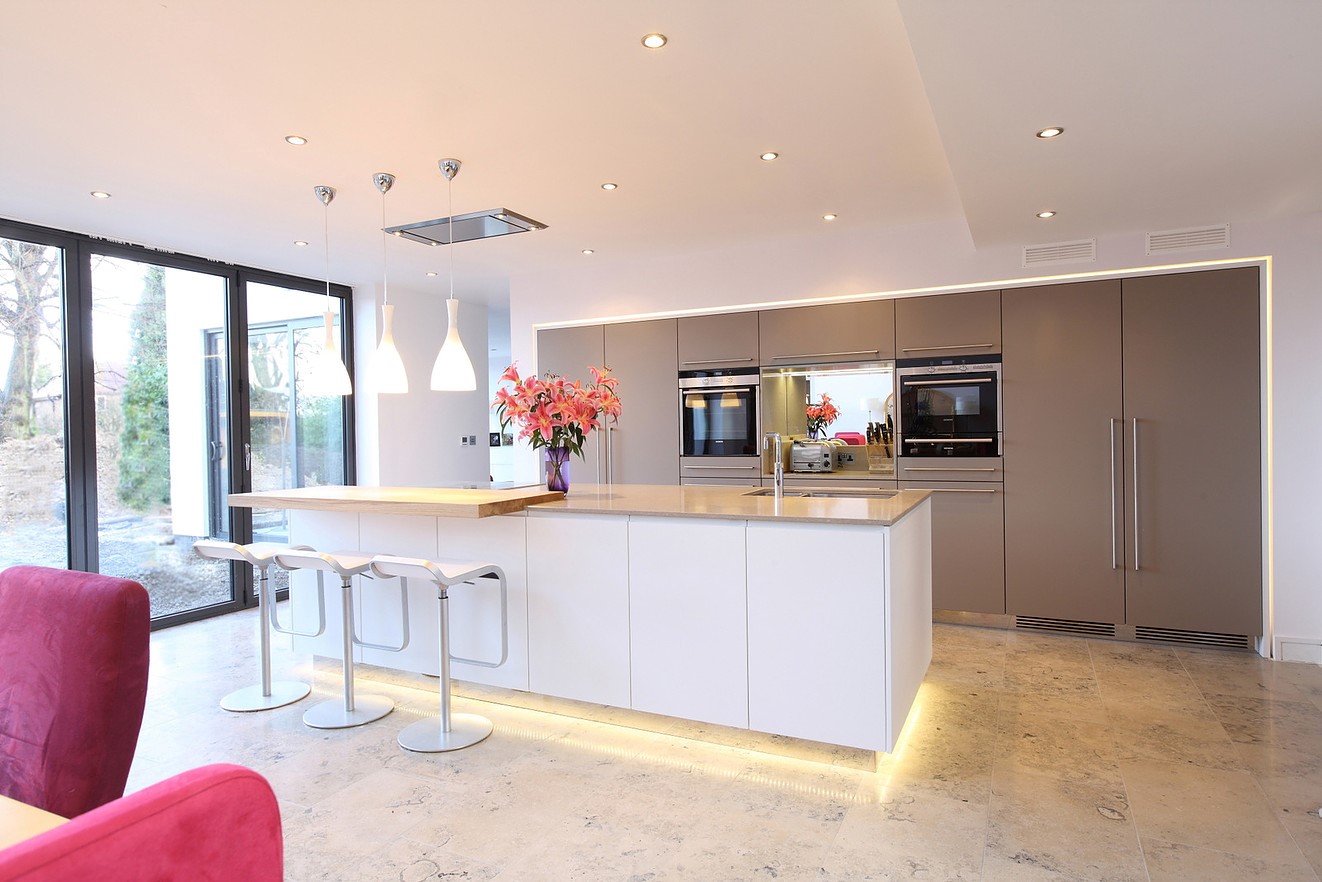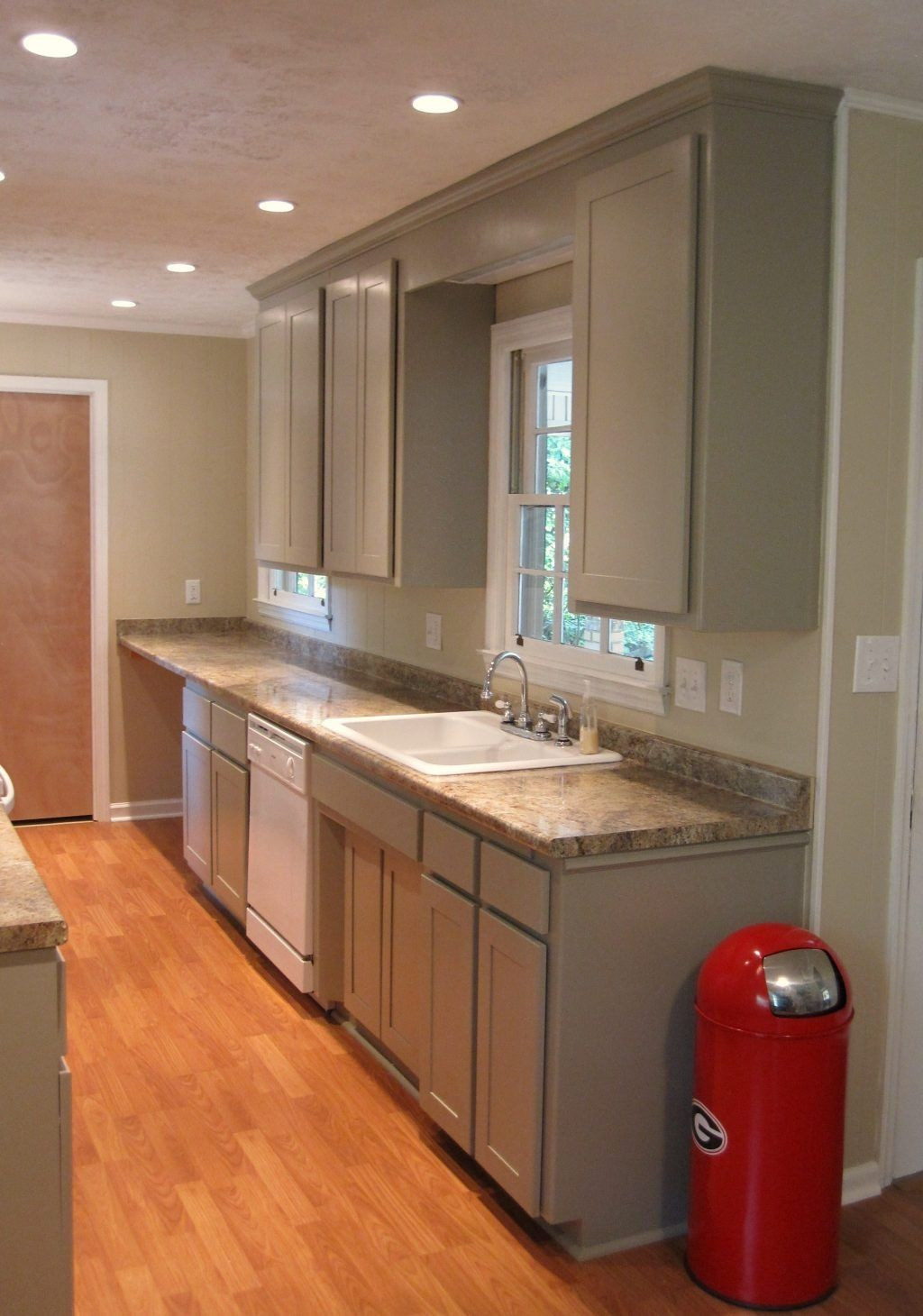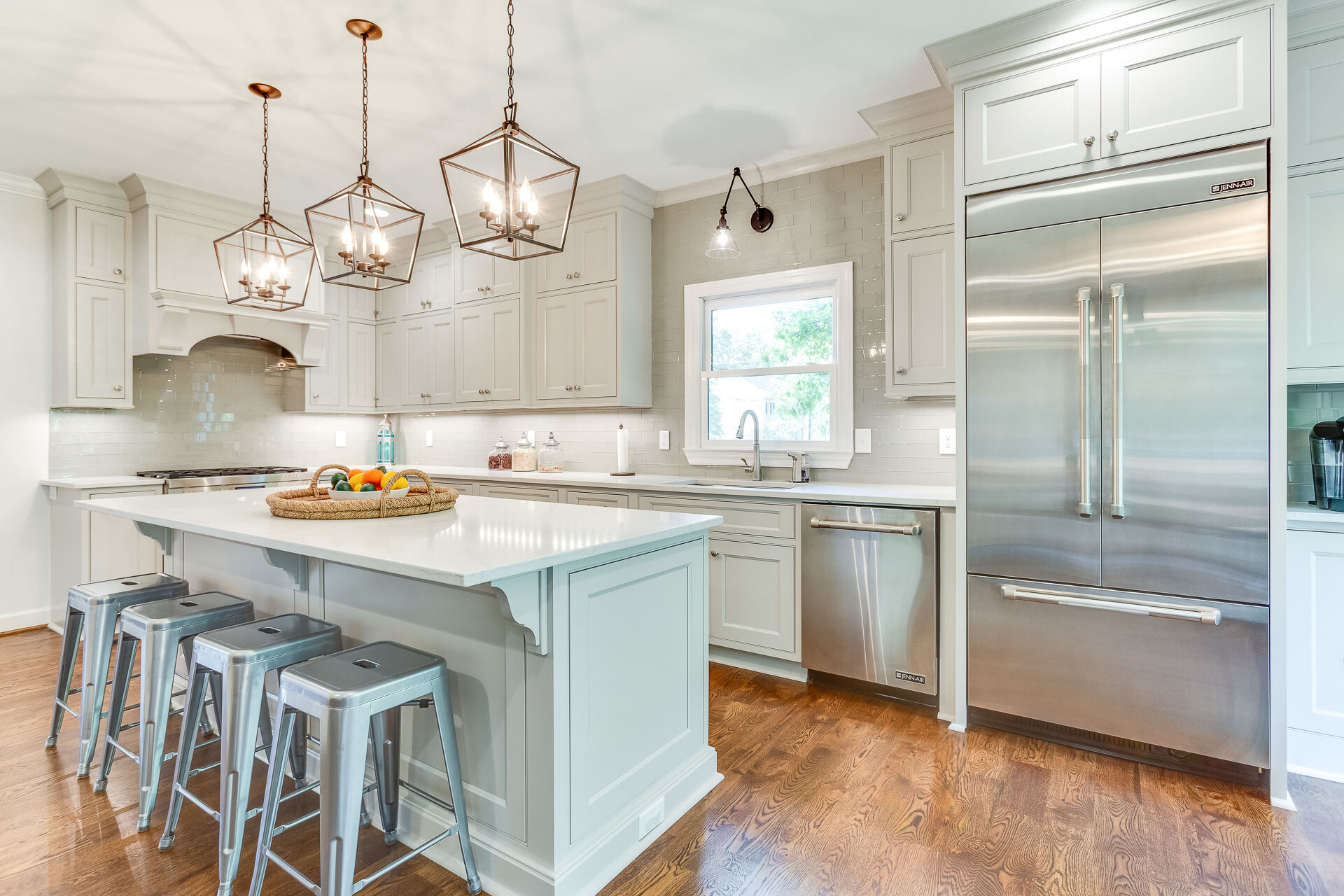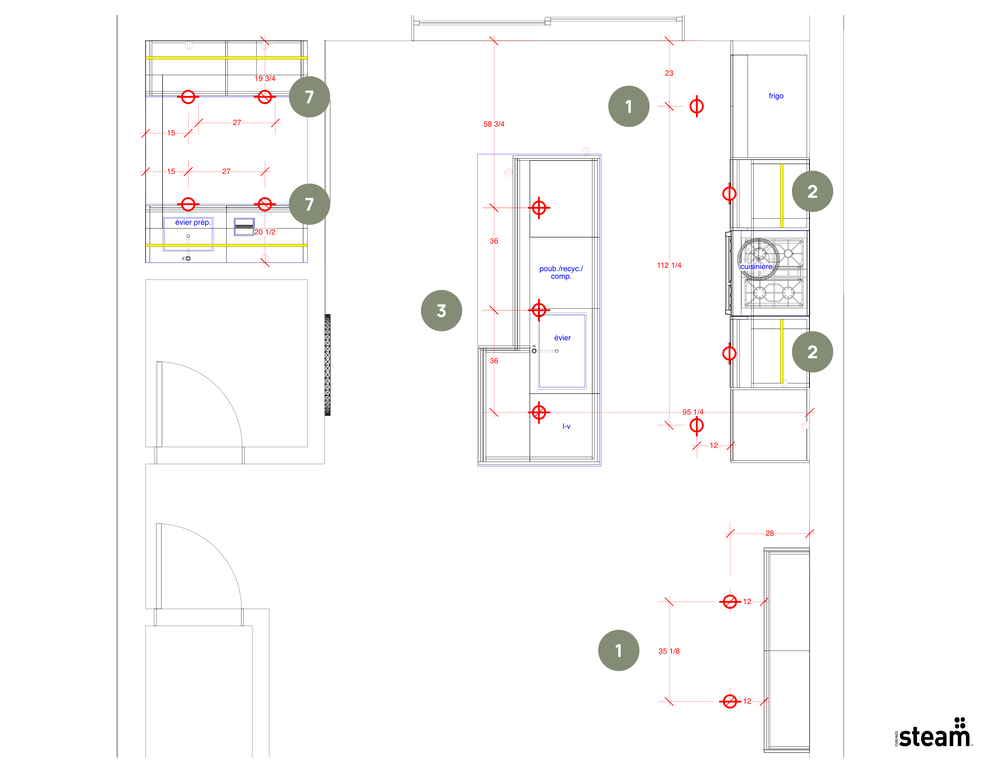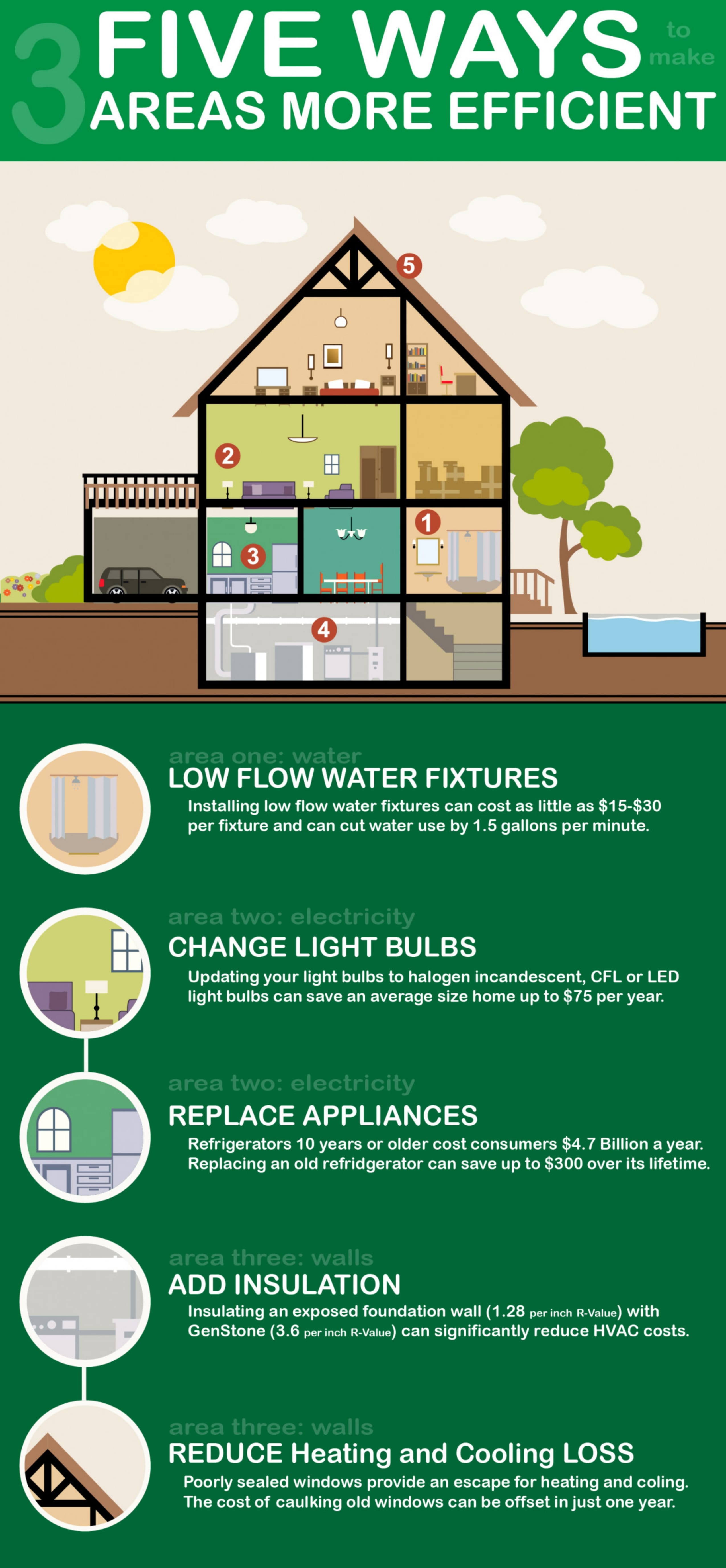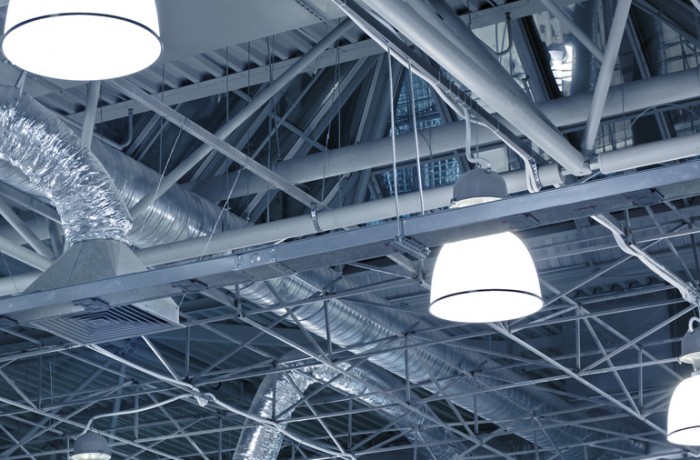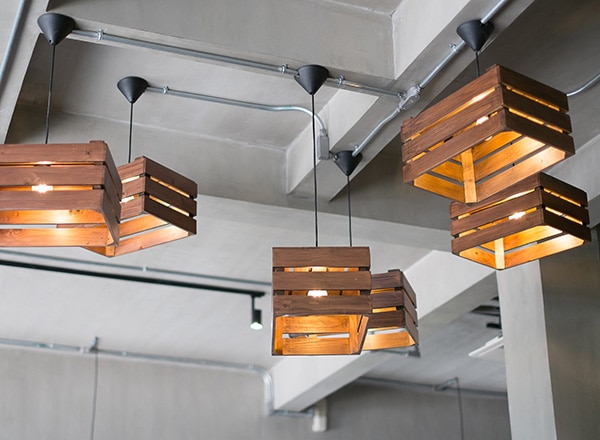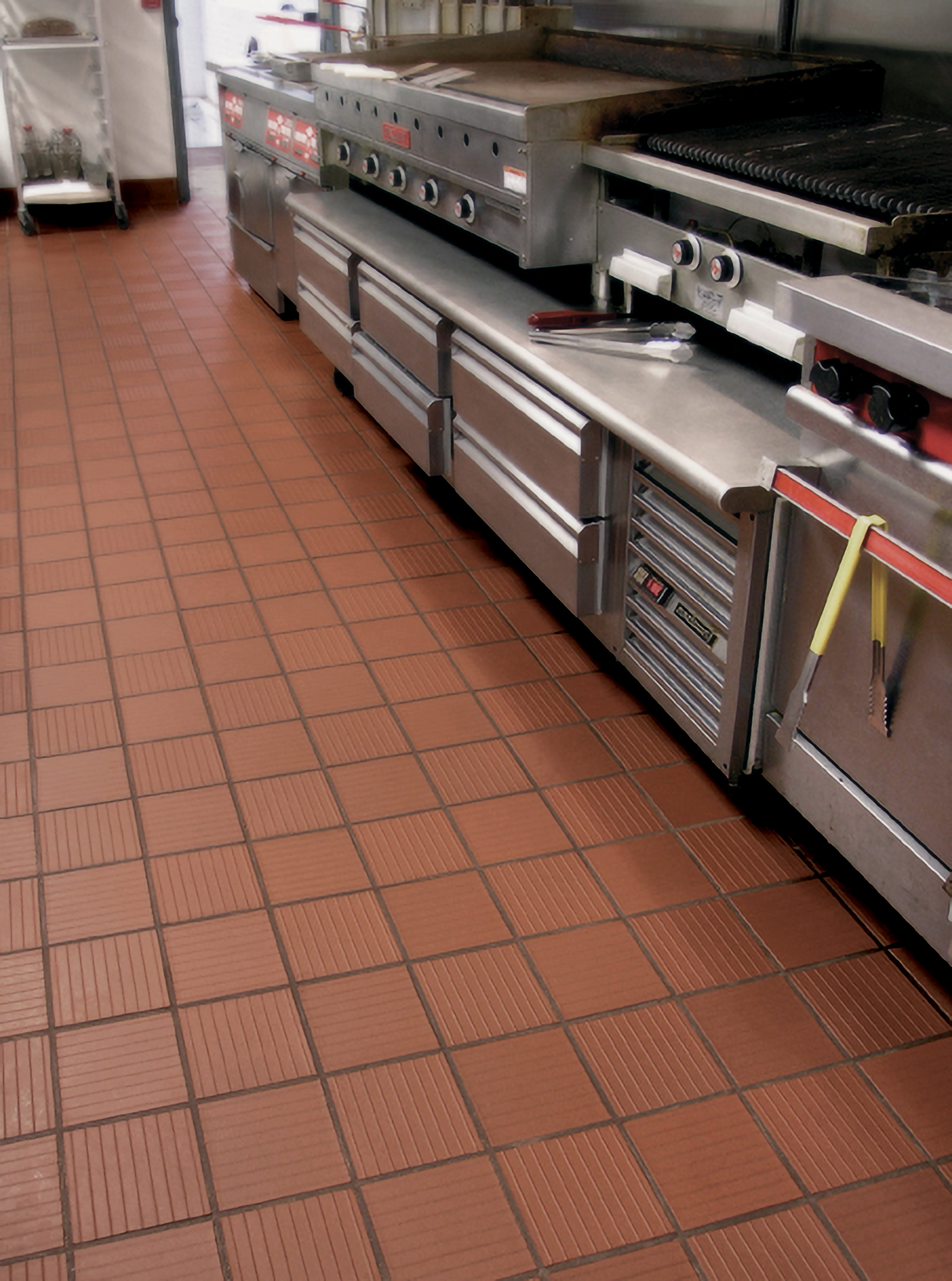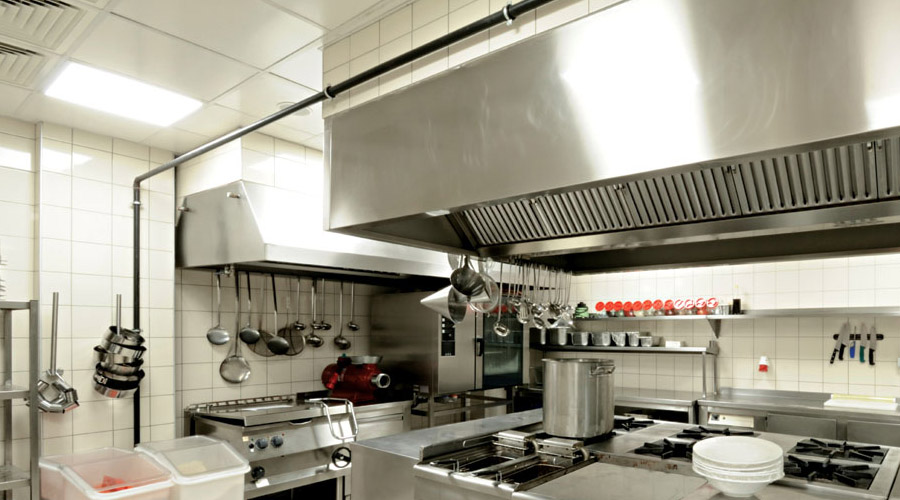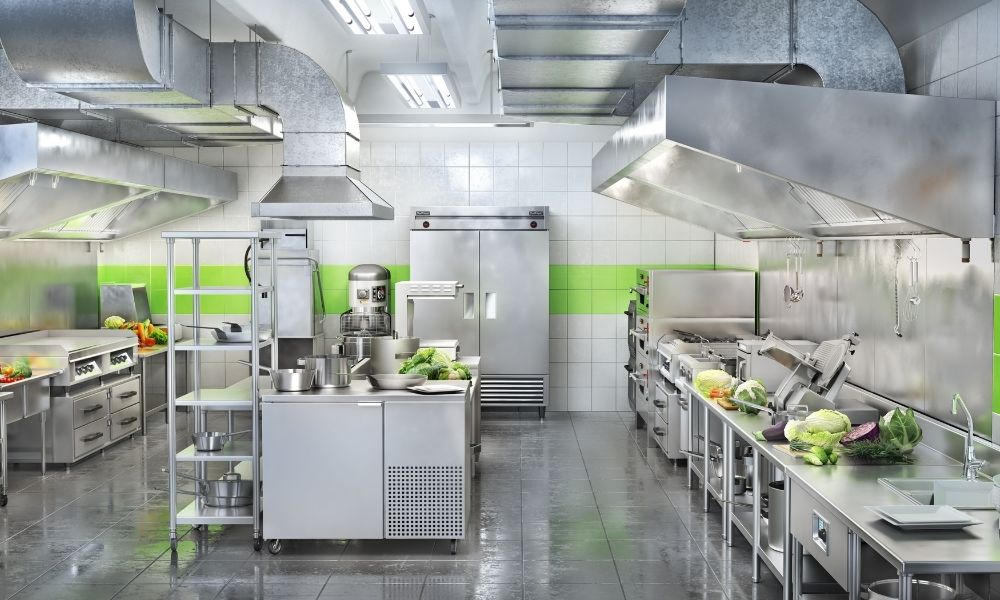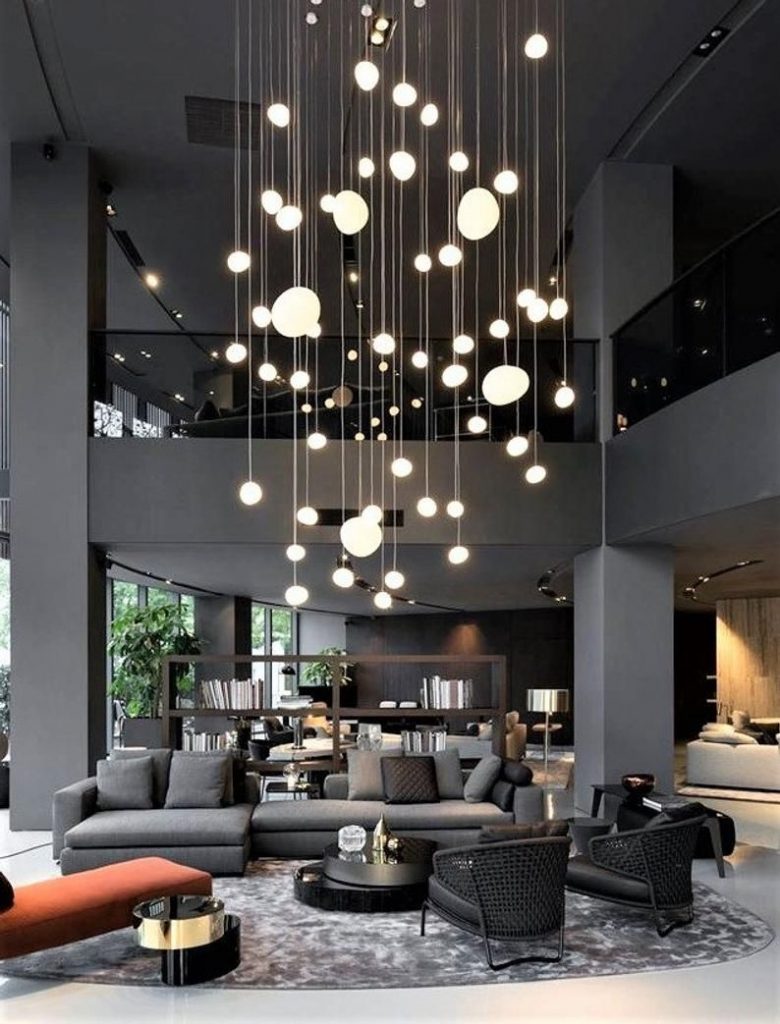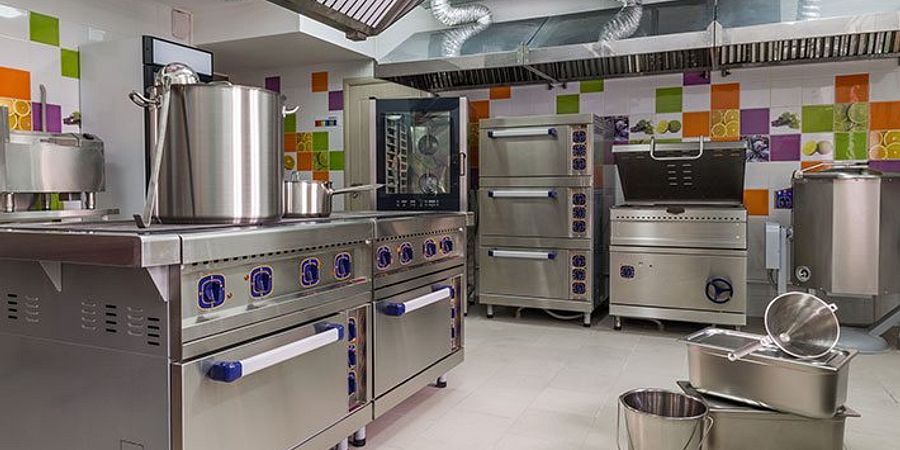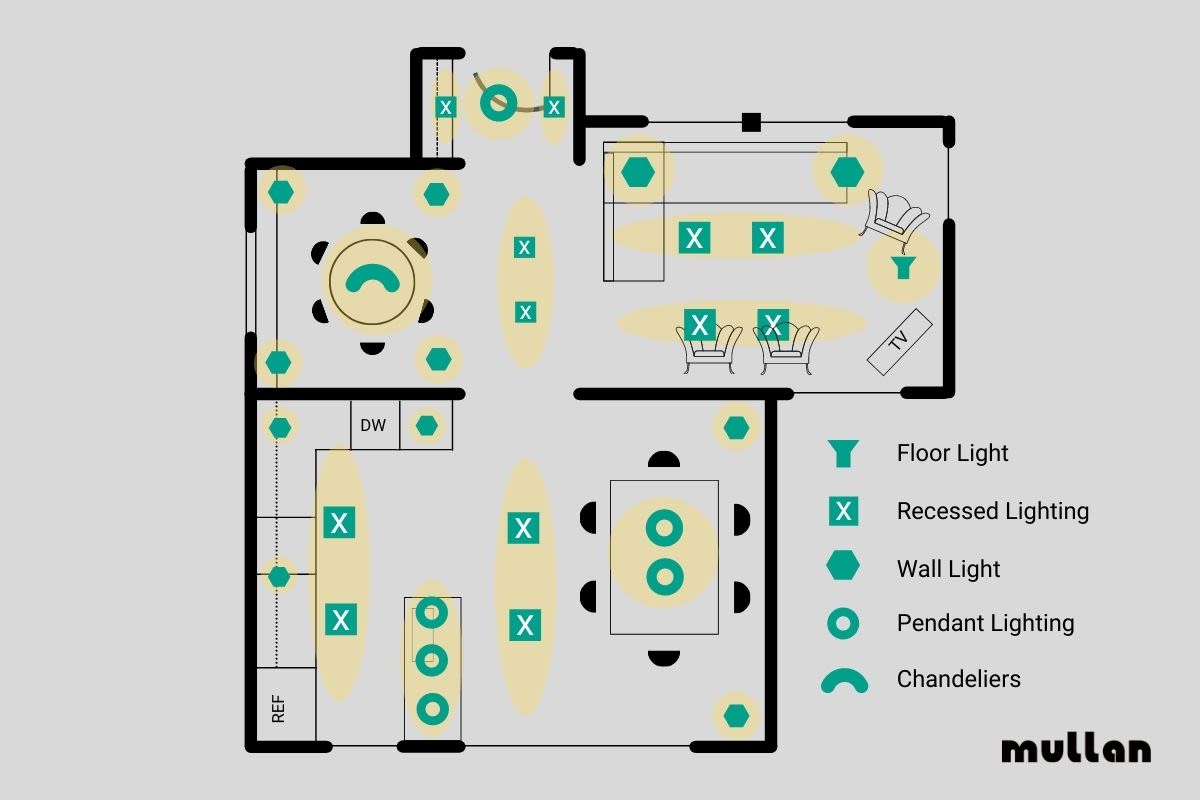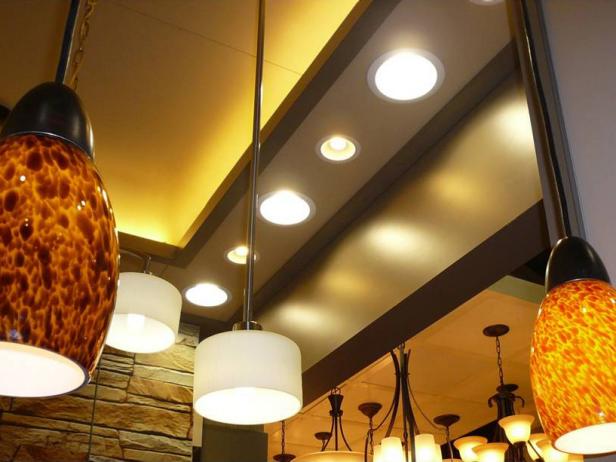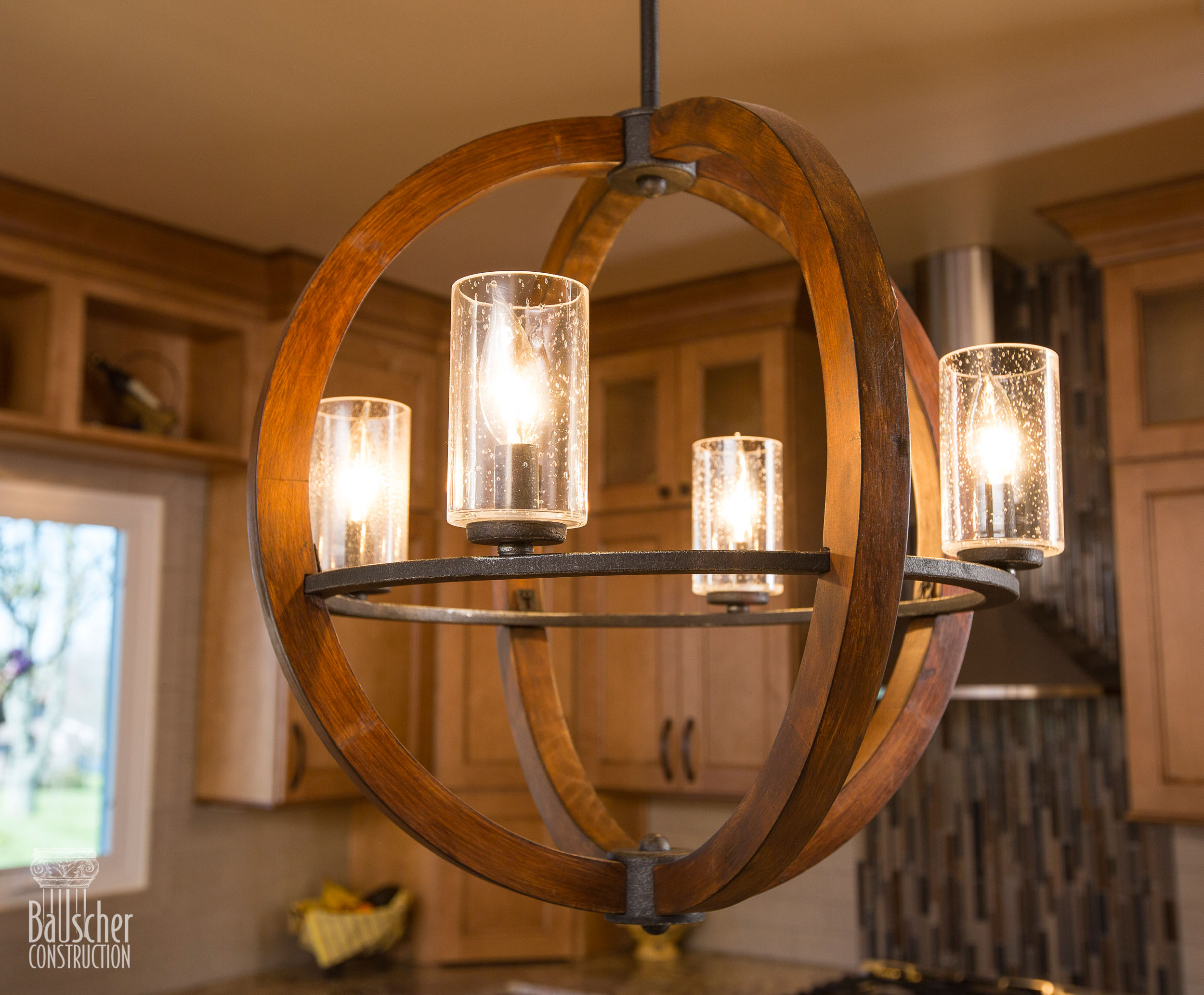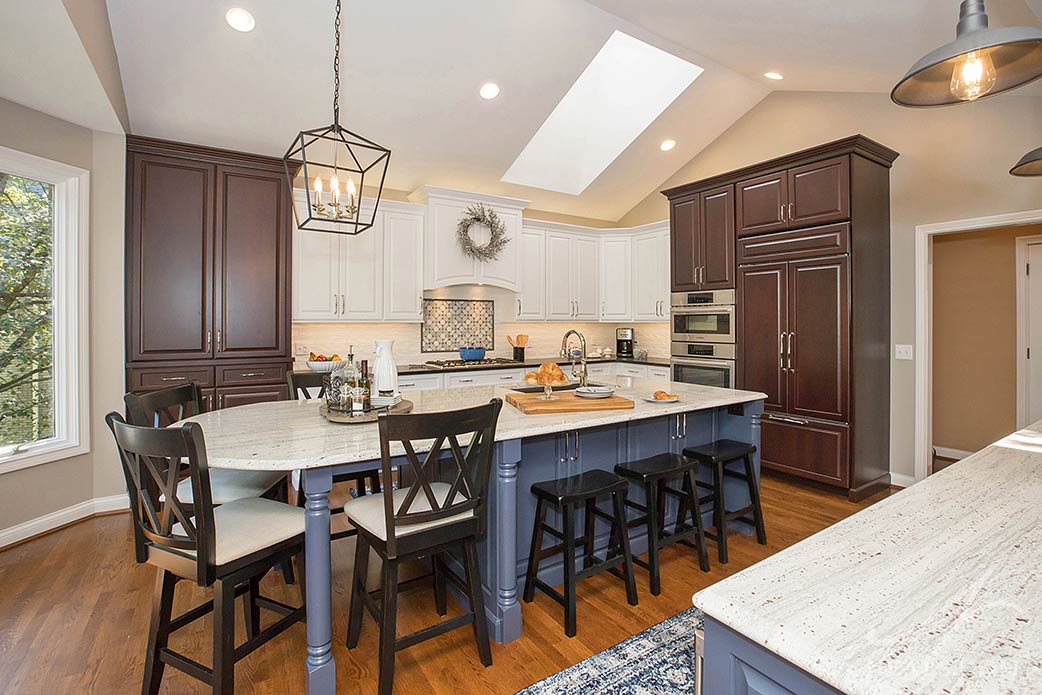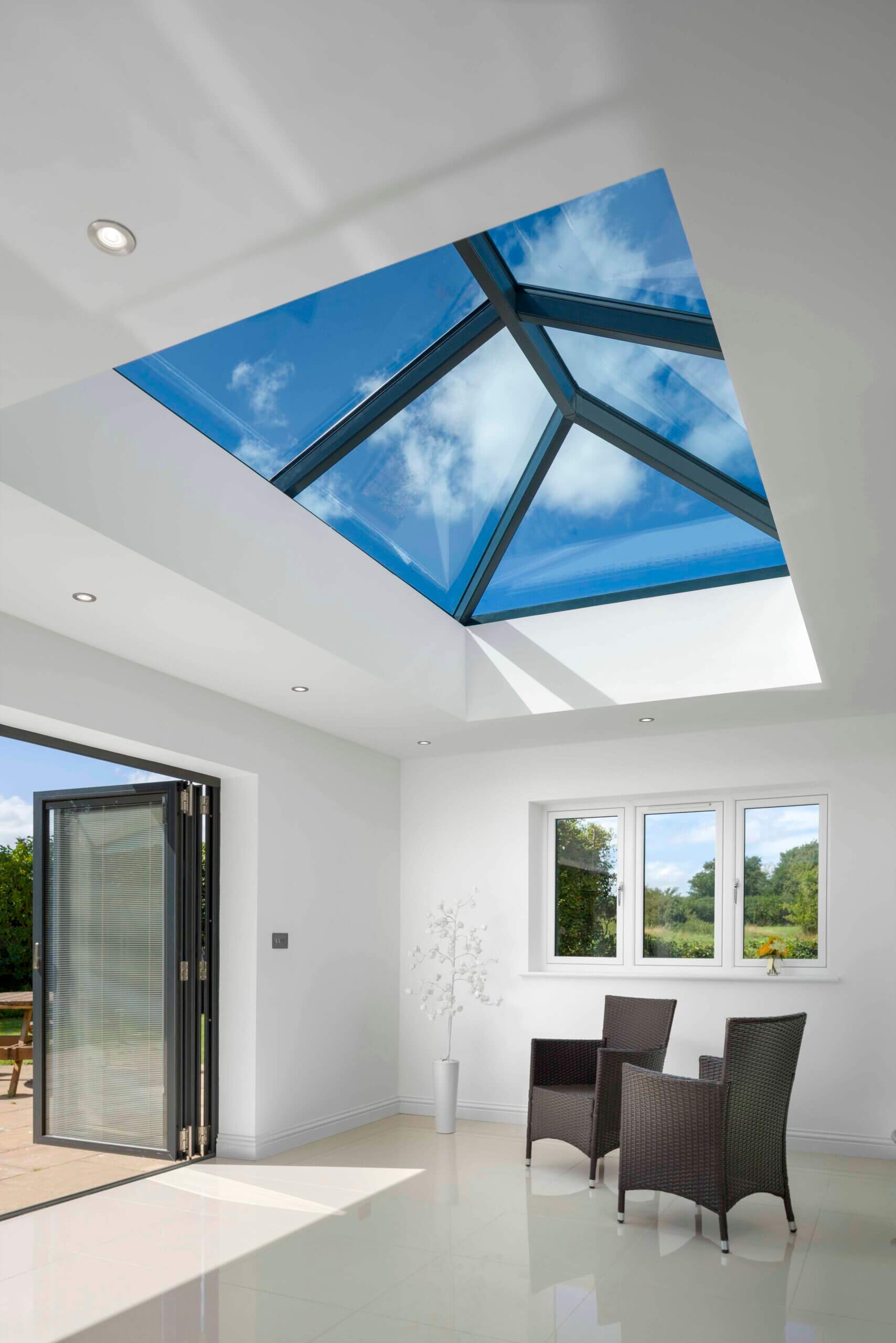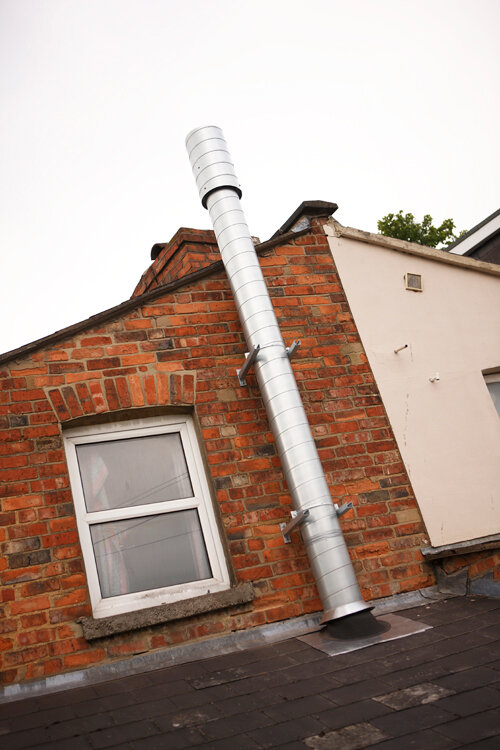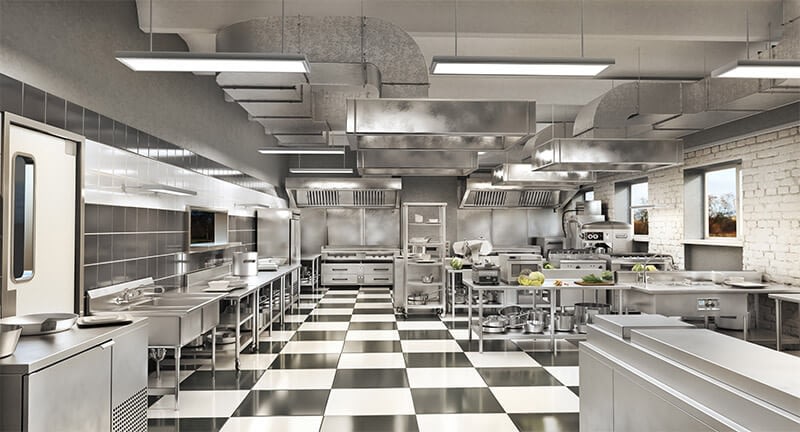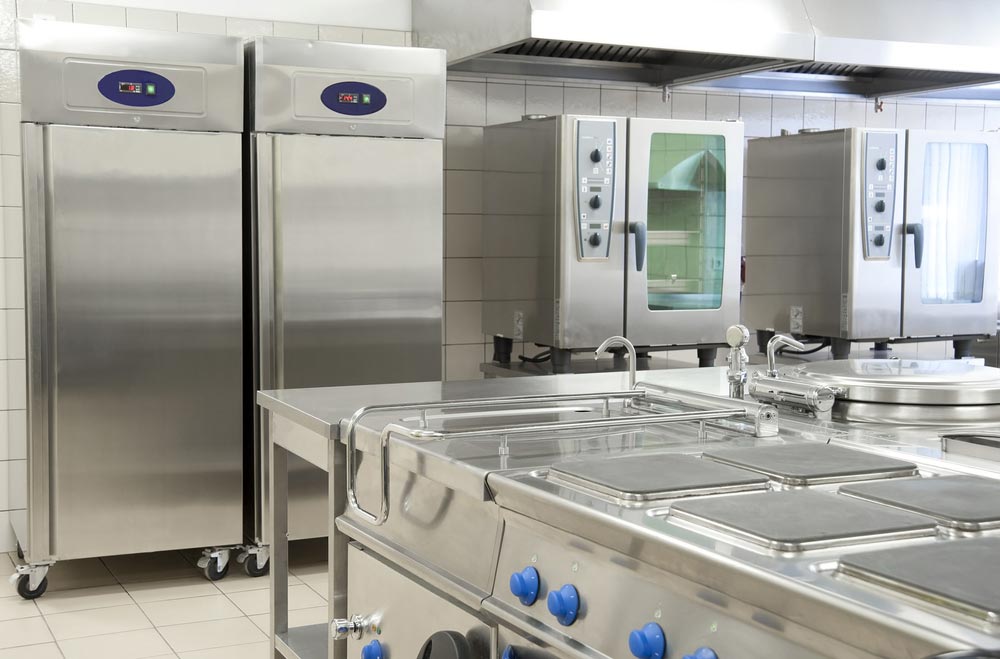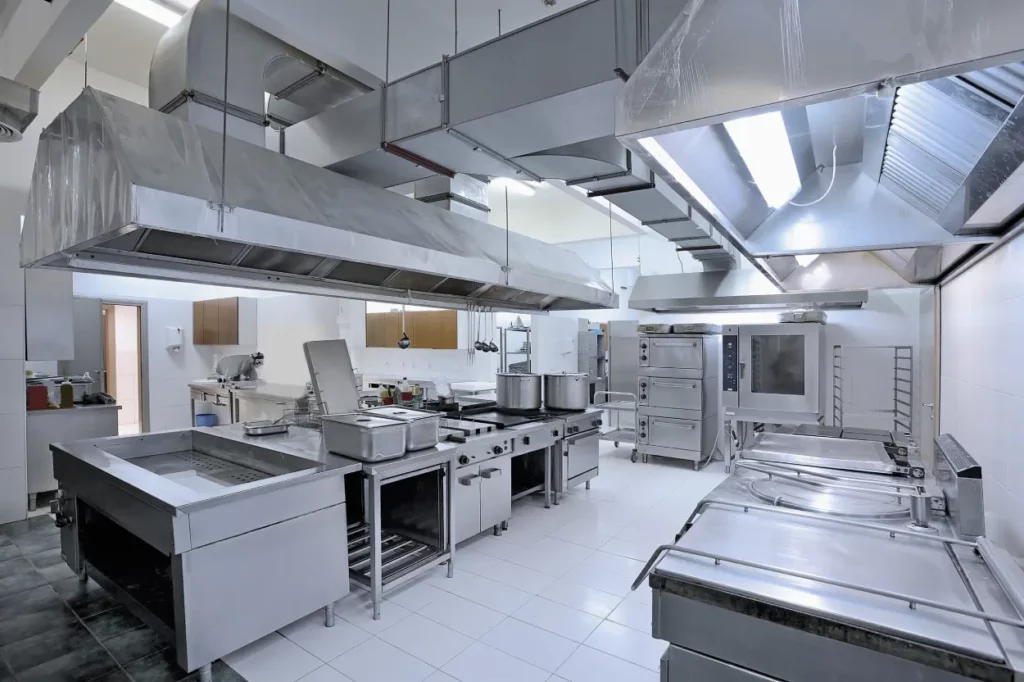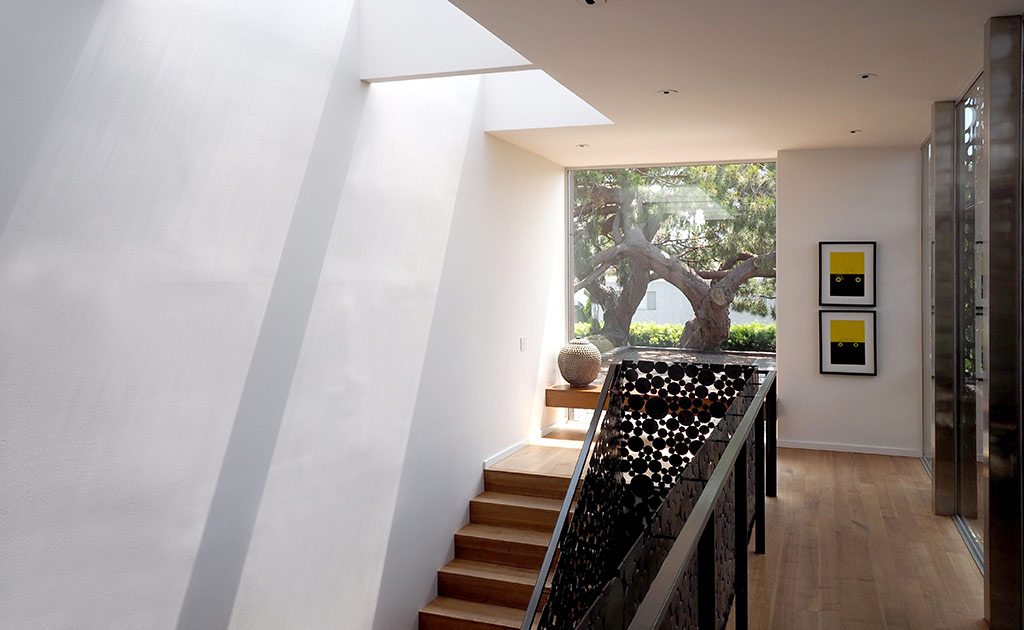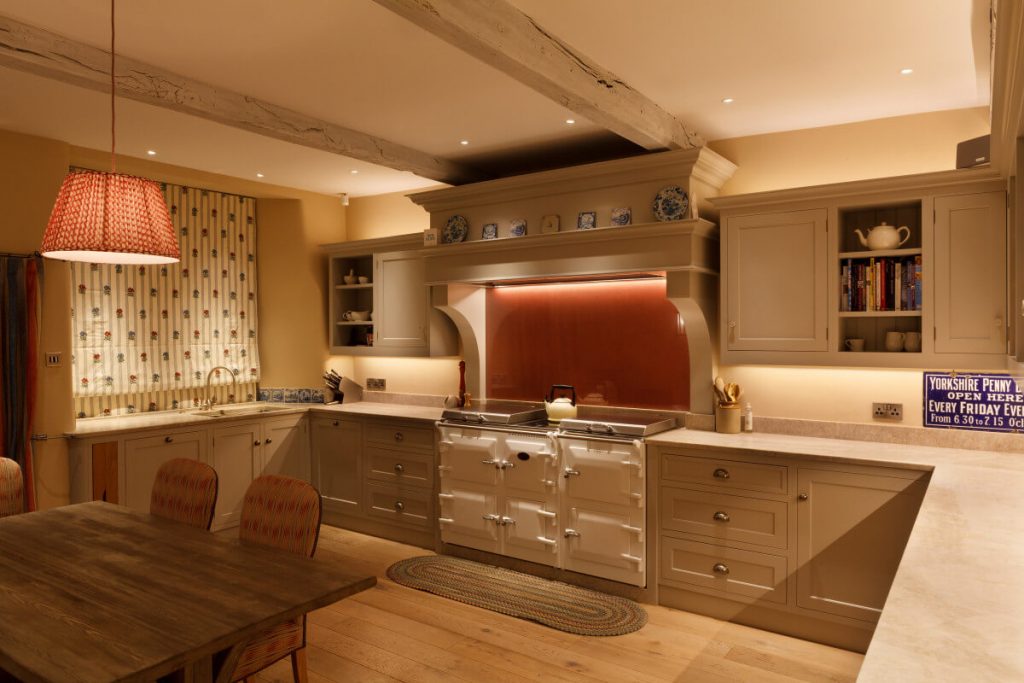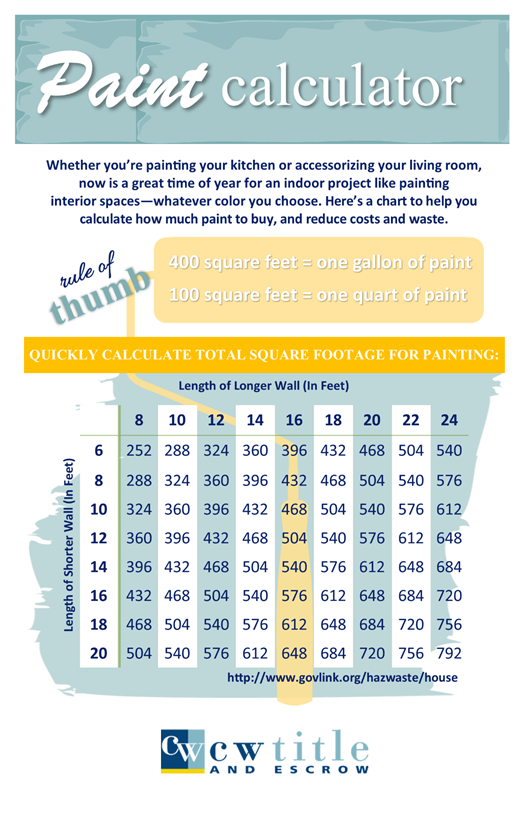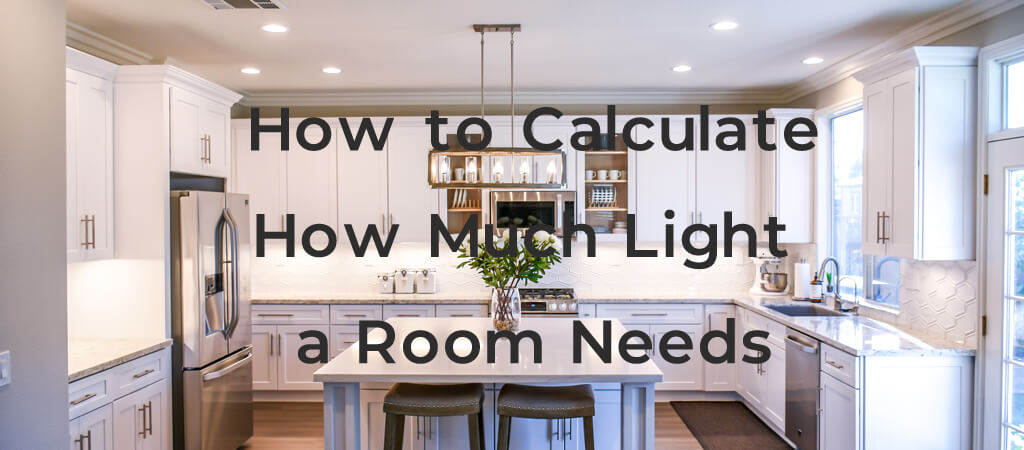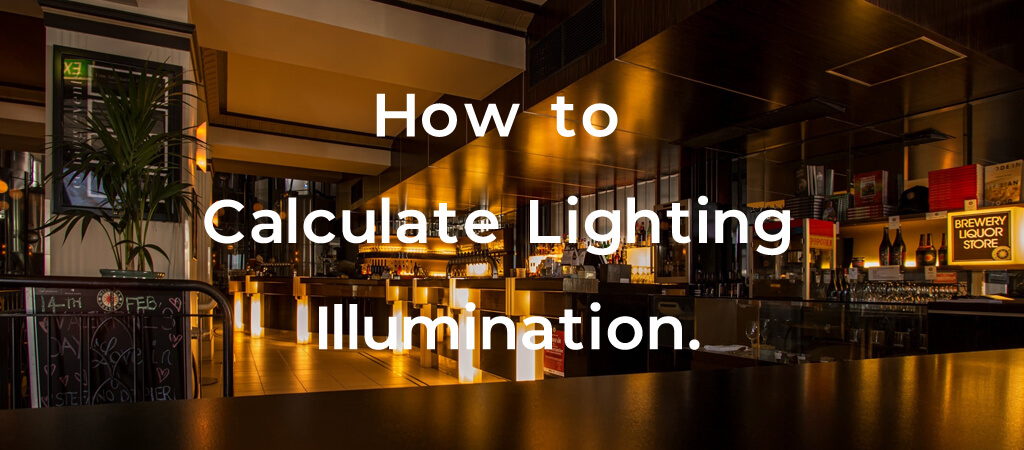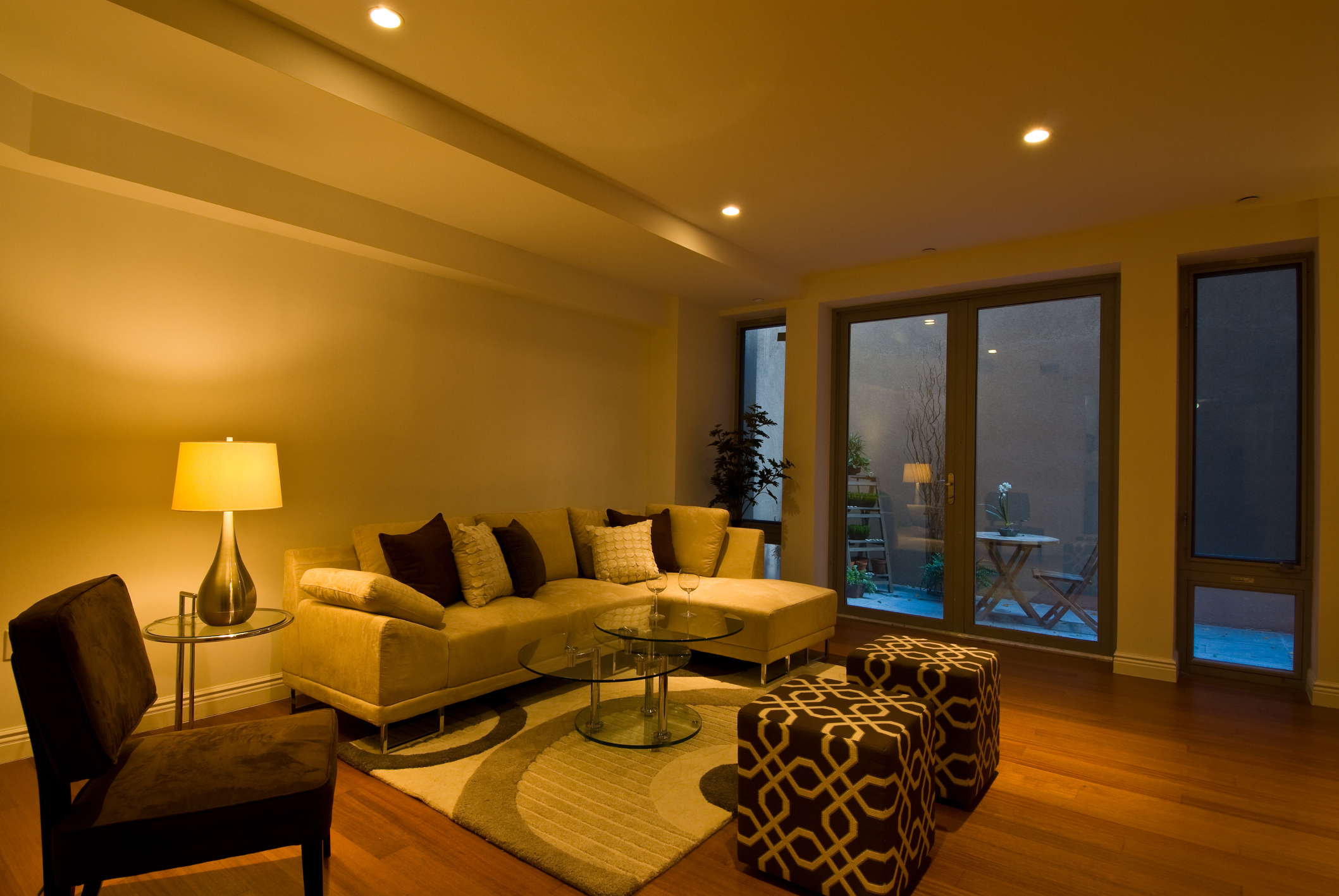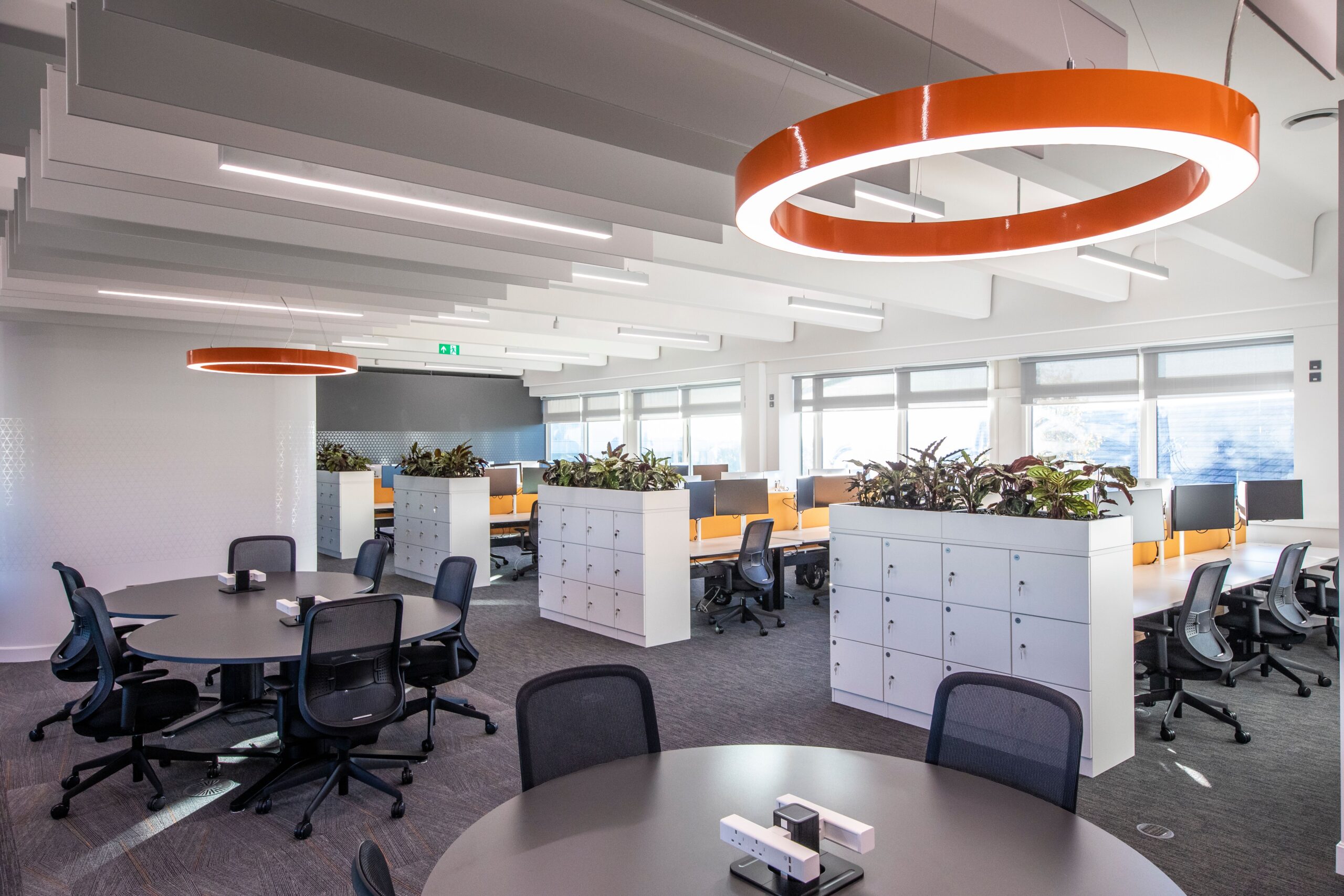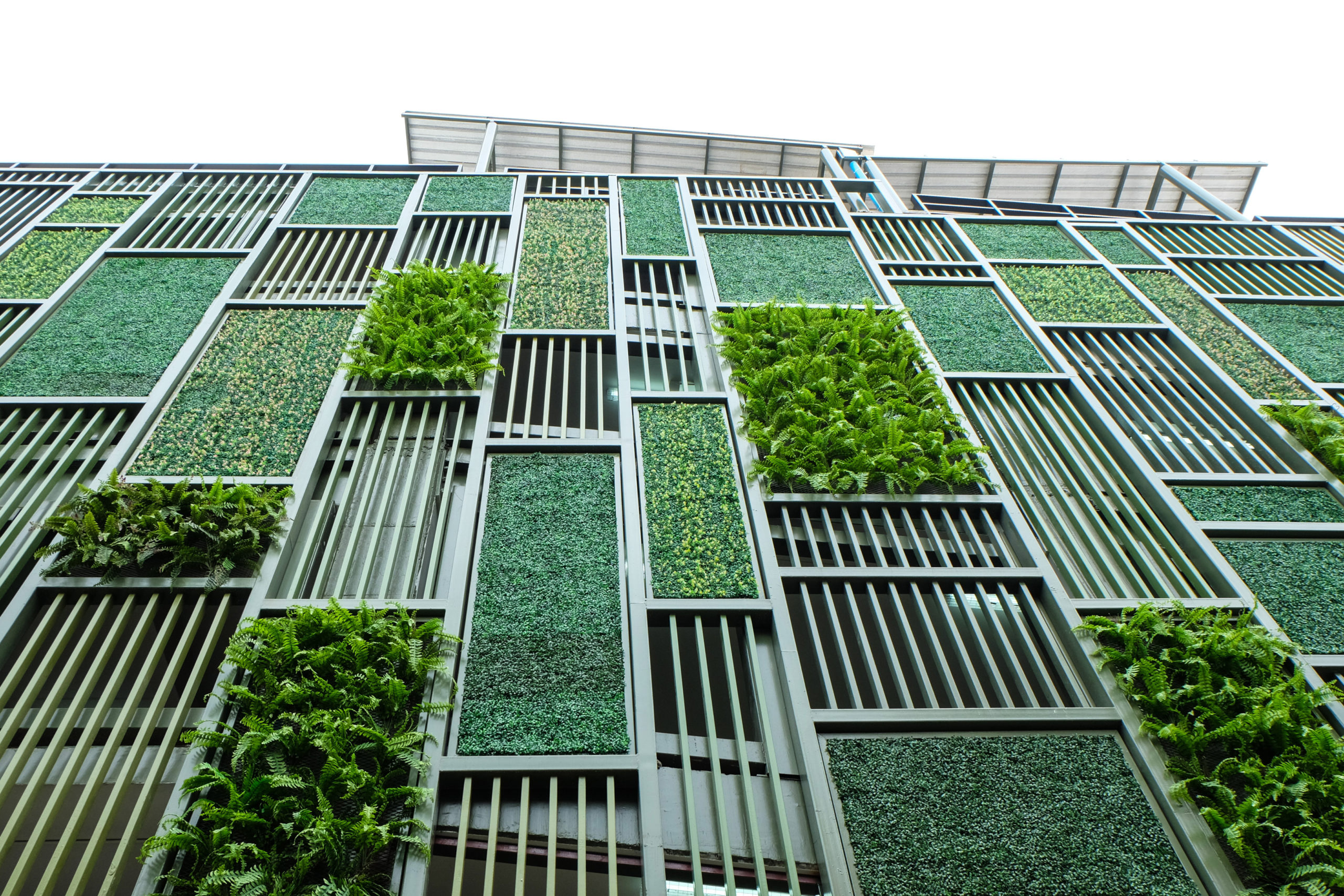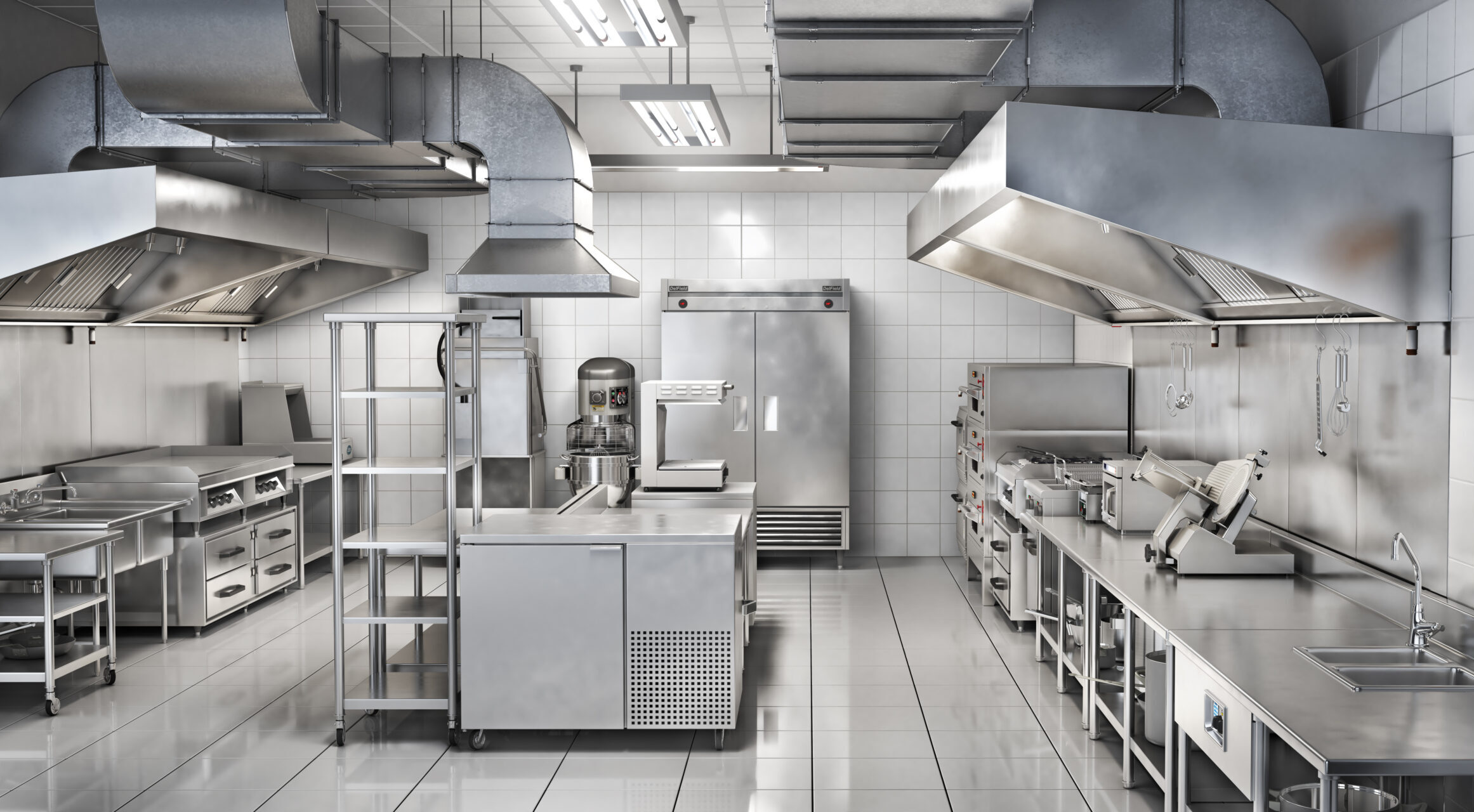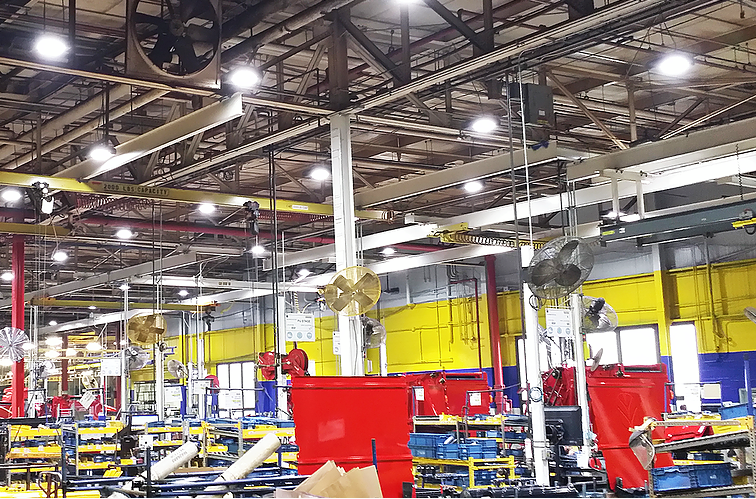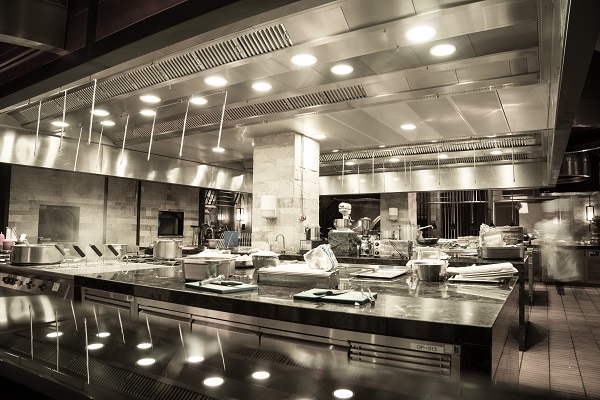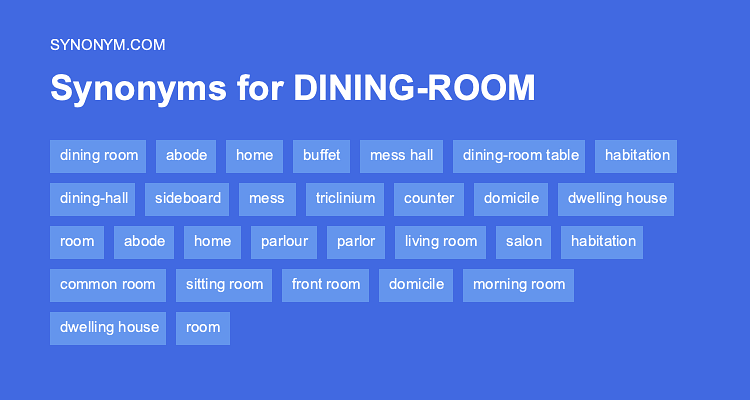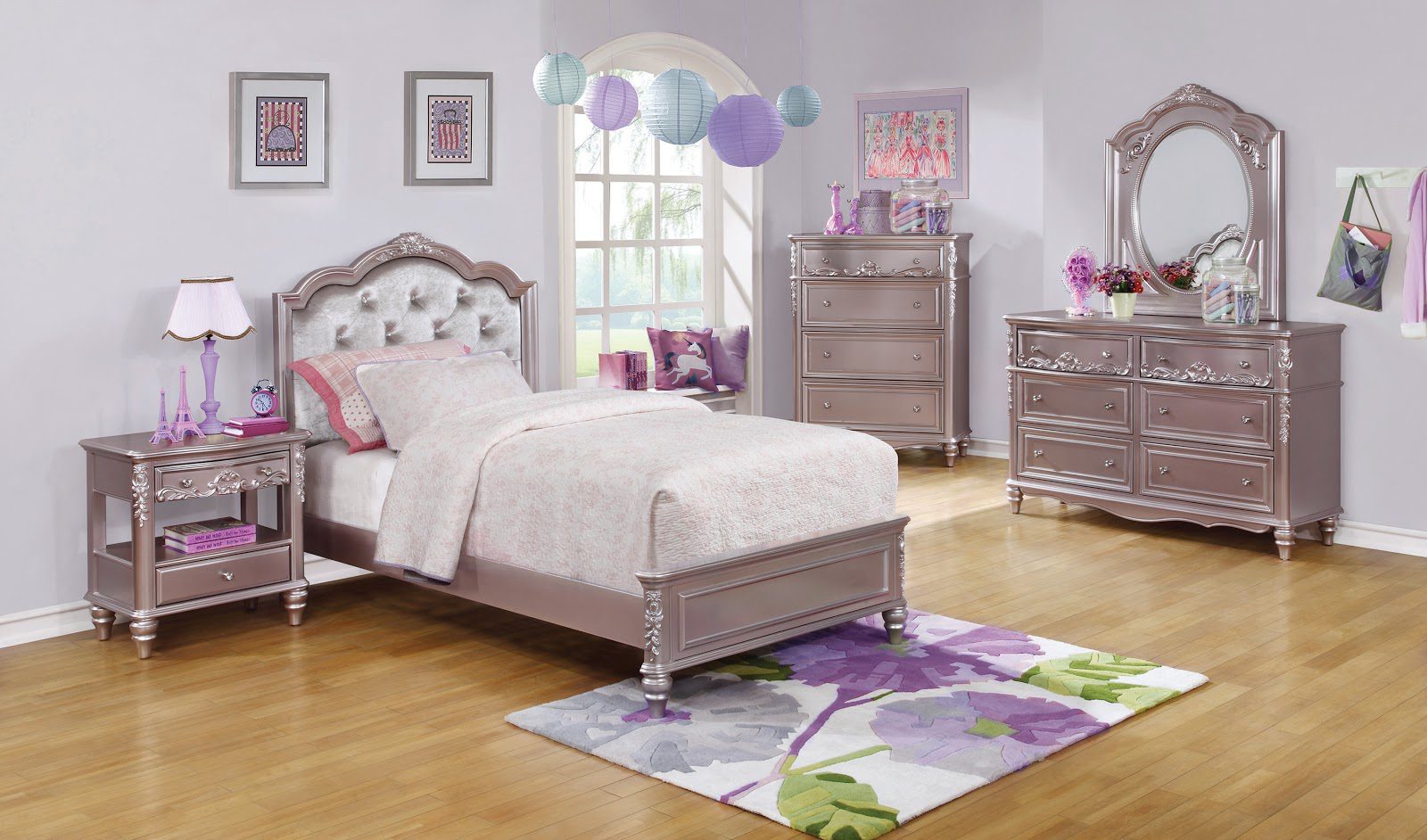In recent years, the use of LED lighting has become increasingly popular in commercial kitchens. This is due to the many benefits that LED lighting offers, including energy efficiency, longevity, and cost-effectiveness. LED bulbs use significantly less energy than traditional incandescent bulbs, making them a great choice for commercial kitchens where lighting is needed for long periods of time. Furthermore, LED bulbs have a much longer lifespan, reducing the need for frequent replacements and lowering maintenance costs. With the variety of color temperatures available, LED lighting can also create the perfect ambience for any commercial kitchen.1. LED Lighting for Commercial Kitchens
The layout of lighting in a commercial kitchen is essential for both functionality and aesthetics. When designing a lighting layout, it is crucial to consider the tasks that will be performed in each area of the kitchen. For example, task lighting, such as under-cabinet lighting, is essential for food preparation areas, while ambient lighting is crucial for creating a comfortable and welcoming atmosphere in the dining area. It is also essential to ensure that the lighting is evenly distributed throughout the space to avoid any dark spots or shadows.2. Best Practices for Commercial Kitchen Lighting Layout
With the rising cost of energy, it is essential to consider energy-efficient lighting options for commercial kitchens. LED lighting is not the only option for energy efficiency; compact fluorescent lamps (CFLs) and fluorescent tubes are also great options. These bulbs use significantly less energy than incandescent bulbs and have a longer lifespan, making them a cost-effective choice for commercial kitchens. Additionally, motion sensors and timers can be installed to ensure lights are not left on when not in use, further reducing energy consumption.3. Energy-Efficient Lighting Options for Commercial Kitchens
Proper lighting in a commercial kitchen is crucial for several reasons. Firstly, it ensures the safety of employees by providing adequate illumination for tasks such as cutting and cooking. Insufficient lighting can increase the risk of accidents and injuries. Secondly, proper lighting can enhance the overall atmosphere of the kitchen, making it more inviting for both employees and customers. Lastly, good lighting can improve productivity and efficiency in the kitchen, as employees can see clearly and work more effectively.4. Importance of Proper Lighting in Commercial Kitchens
When designing a lighting layout for a commercial kitchen, it is crucial to consider both functionality and aesthetics. As mentioned earlier, task lighting is essential for areas where food preparation takes place, while ambient lighting is necessary for creating a pleasant atmosphere in the dining area. Additionally, accent lighting can be used to highlight specific areas, such as a display of food or a feature wall. It is essential to strike the right balance between these types of lighting to create a functional and visually appealing space.5. Designing a Functional Lighting Layout for Commercial Kitchens
There are various types of lighting fixtures that can be used in commercial kitchens, each serving a different purpose. Some common options include recessed lights, track lights, and pendant lights. Recessed lights are a popular choice for task lighting as they provide a concentrated beam of light and can be directed to specific areas. Track lights are versatile and can be adjusted to focus on different parts of the kitchen. Pendant lights, on the other hand, are great for adding a decorative touch to the space while providing functional lighting.6. Types of Lighting Fixtures for Commercial Kitchens
Natural light is an excellent source of illumination for any space, including commercial kitchens. Not only does it provide a sense of openness and brightness, but it also reduces the need for artificial lighting, thus lowering energy costs. To maximize natural light in a commercial kitchen, consider incorporating windows, skylights, or glass doors into the design. Additionally, using light-colored finishes for walls and surfaces can help reflect natural light, making the space feel brighter and more spacious.7. Maximizing Natural Light in Commercial Kitchen Layouts
When designing the lighting layout for a commercial kitchen, it is crucial to avoid common mistakes that can affect the functionality and aesthetics of the space. These include insufficient lighting, poor placement of fixtures, and using the wrong type of lighting for specific areas. It is also essential to consider the color temperature of the bulbs used, as warm white light is more suitable for dining areas, while cool white light is better for task areas. Avoiding these mistakes can ensure that the lighting in the commercial kitchen is both functional and visually appealing.8. Common Lighting Mistakes to Avoid in Commercial Kitchens
Calculating the lighting needs for a commercial kitchen involves considering the size and layout of the space, the tasks that will be performed in each area, and the desired level of illumination. To determine the number of fixtures needed, the square footage of the kitchen can be divided by the wattage of the bulbs used. It is also essential to consider the type of lighting needed in each area, as different tasks may require different levels of illumination. Consulting a professional can also help ensure that the lighting needs are accurately calculated.9. How to Calculate Lighting Needs for a Commercial Kitchen
For commercial kitchens that are already in use, it may not be feasible to completely overhaul the lighting layout. In this case, retrofitting existing lighting fixtures with more energy-efficient options can be a cost-effective solution. This can include replacing incandescent bulbs with LED or CFL bulbs, installing motion sensors, or adding dimmers to control the level of lighting. Not only can these changes lower energy costs, but they can also improve the overall functionality and ambience of the space.10. Retrofitting Existing Lighting in Commercial Kitchens for Better Efficiency
Creating a Functional and Efficient Commercial Kitchen Lighting Layout

The Importance of Lighting in a Commercial Kitchen
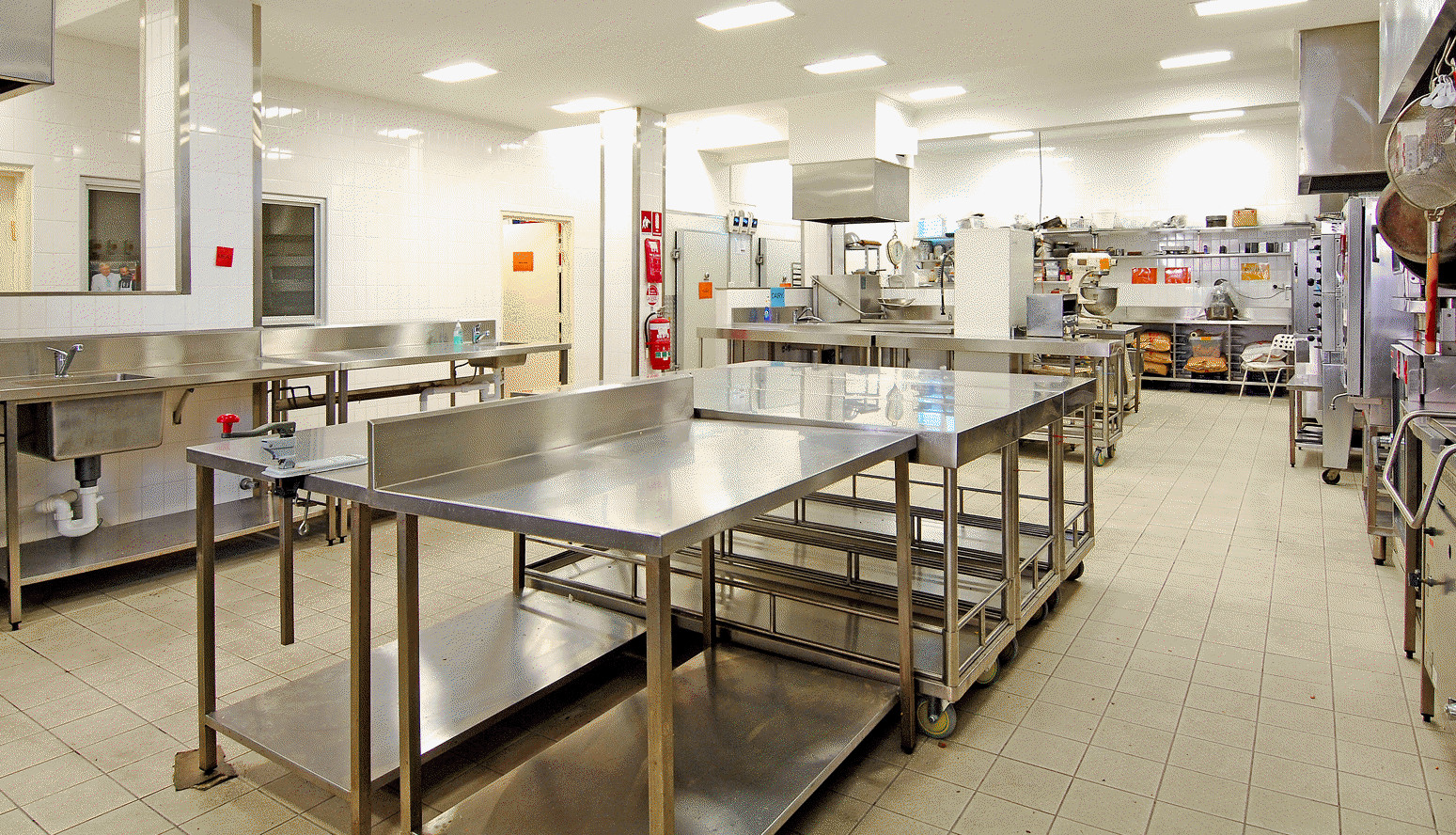 When designing a commercial kitchen, one of the most crucial elements to consider is
lighting
. A well-planned and properly executed lighting layout can make all the difference in creating a functional and efficient space. Not only does lighting play a significant role in the overall design aesthetic, but it also affects the safety and productivity of the kitchen staff. In this article, we will discuss the key factors to consider when designing a
commercial kitchen lighting layout
that meets both design and functional needs.
When designing a commercial kitchen, one of the most crucial elements to consider is
lighting
. A well-planned and properly executed lighting layout can make all the difference in creating a functional and efficient space. Not only does lighting play a significant role in the overall design aesthetic, but it also affects the safety and productivity of the kitchen staff. In this article, we will discuss the key factors to consider when designing a
commercial kitchen lighting layout
that meets both design and functional needs.
Understanding the Different Types of Lighting
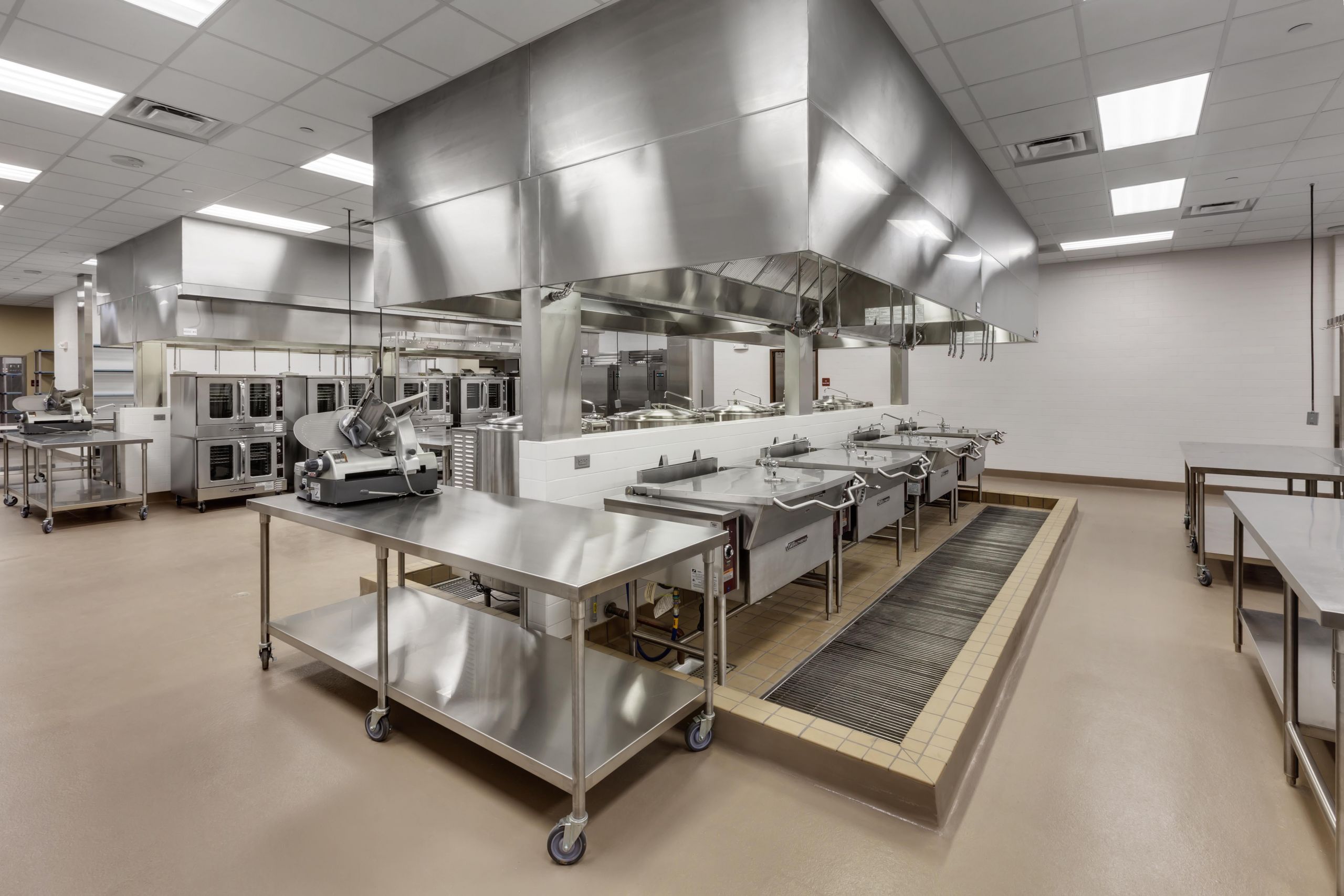 Before diving into the specifics of creating a lighting layout, it is essential to understand the different types of lighting that can be used in a commercial kitchen.
Ambient lighting
provides general illumination to the entire space and is typically achieved through the use of overhead fixtures.
Task lighting
, on the other hand, is more focused and is used to illuminate specific work areas, such as the cooking and prep stations.
Accent lighting
is used to highlight certain design elements or create a particular mood in the kitchen. By combining these different types of lighting, you can create a well-balanced and functional lighting layout for your commercial kitchen.
Before diving into the specifics of creating a lighting layout, it is essential to understand the different types of lighting that can be used in a commercial kitchen.
Ambient lighting
provides general illumination to the entire space and is typically achieved through the use of overhead fixtures.
Task lighting
, on the other hand, is more focused and is used to illuminate specific work areas, such as the cooking and prep stations.
Accent lighting
is used to highlight certain design elements or create a particular mood in the kitchen. By combining these different types of lighting, you can create a well-balanced and functional lighting layout for your commercial kitchen.
Factors to Consider in a Commercial Kitchen Lighting Layout
 When designing a
commercial kitchen lighting layout
, there are several important factors to consider. First and foremost, the lighting should meet the specific needs of the space. This means taking into account the size and layout of the kitchen, as well as the tasks that will be performed in each area. For example, the lighting in the cooking and prep stations will need to be brighter and more focused than the lighting in the dining area.
Energy efficiency
is another crucial factor to consider when designing a lighting layout. Using energy-efficient fixtures and bulbs can not only save you money on your energy bills but also contribute to a more environmentally friendly kitchen. Additionally, proper lighting placement can help to reduce energy usage. For example, by placing task lighting directly above workstations, you can minimize the need for ambient lighting.
Safety
is also a top priority in a commercial kitchen. This means not only providing adequate lighting for tasks but also ensuring that all fixtures and wiring are up to code and properly installed. It is also important to consider the potential for water and grease splatter, and choose fixtures and bulbs that are resistant to these elements.
When designing a
commercial kitchen lighting layout
, there are several important factors to consider. First and foremost, the lighting should meet the specific needs of the space. This means taking into account the size and layout of the kitchen, as well as the tasks that will be performed in each area. For example, the lighting in the cooking and prep stations will need to be brighter and more focused than the lighting in the dining area.
Energy efficiency
is another crucial factor to consider when designing a lighting layout. Using energy-efficient fixtures and bulbs can not only save you money on your energy bills but also contribute to a more environmentally friendly kitchen. Additionally, proper lighting placement can help to reduce energy usage. For example, by placing task lighting directly above workstations, you can minimize the need for ambient lighting.
Safety
is also a top priority in a commercial kitchen. This means not only providing adequate lighting for tasks but also ensuring that all fixtures and wiring are up to code and properly installed. It is also important to consider the potential for water and grease splatter, and choose fixtures and bulbs that are resistant to these elements.
Incorporating Design Aesthetics
 While functionality and safety are crucial in a commercial kitchen, design aesthetics should not be overlooked. Lighting can play a significant role in creating a welcoming and visually appealing space. By incorporating
design elements
such as pendant lights, chandeliers, or under-cabinet lighting, you can add a touch of personality and style to your kitchen.
While functionality and safety are crucial in a commercial kitchen, design aesthetics should not be overlooked. Lighting can play a significant role in creating a welcoming and visually appealing space. By incorporating
design elements
such as pendant lights, chandeliers, or under-cabinet lighting, you can add a touch of personality and style to your kitchen.
Final Thoughts
 In conclusion, designing a
commercial kitchen lighting layout
requires careful consideration of various factors, including functionality, energy efficiency, safety, and design. By combining the different types of lighting and keeping these key factors in mind, you can create a well-lit and highly functional kitchen that meets all your needs.
In conclusion, designing a
commercial kitchen lighting layout
requires careful consideration of various factors, including functionality, energy efficiency, safety, and design. By combining the different types of lighting and keeping these key factors in mind, you can create a well-lit and highly functional kitchen that meets all your needs.



